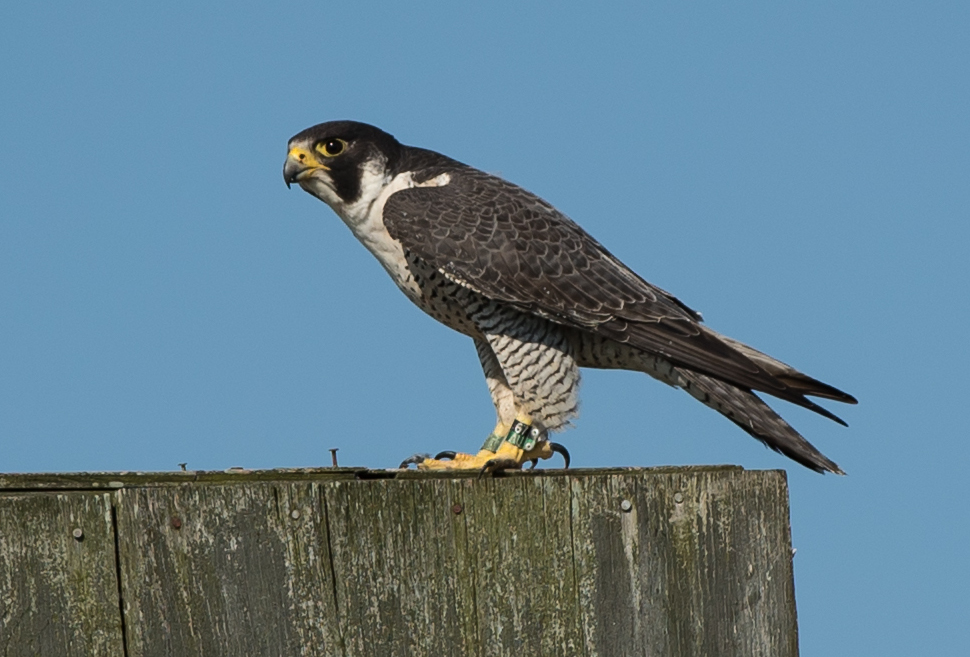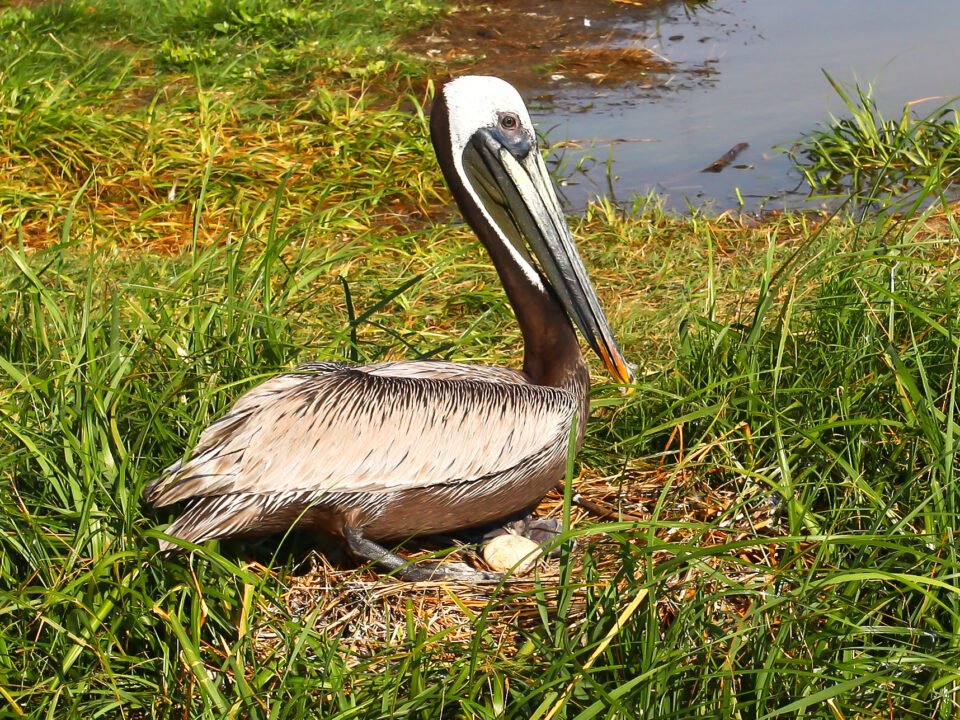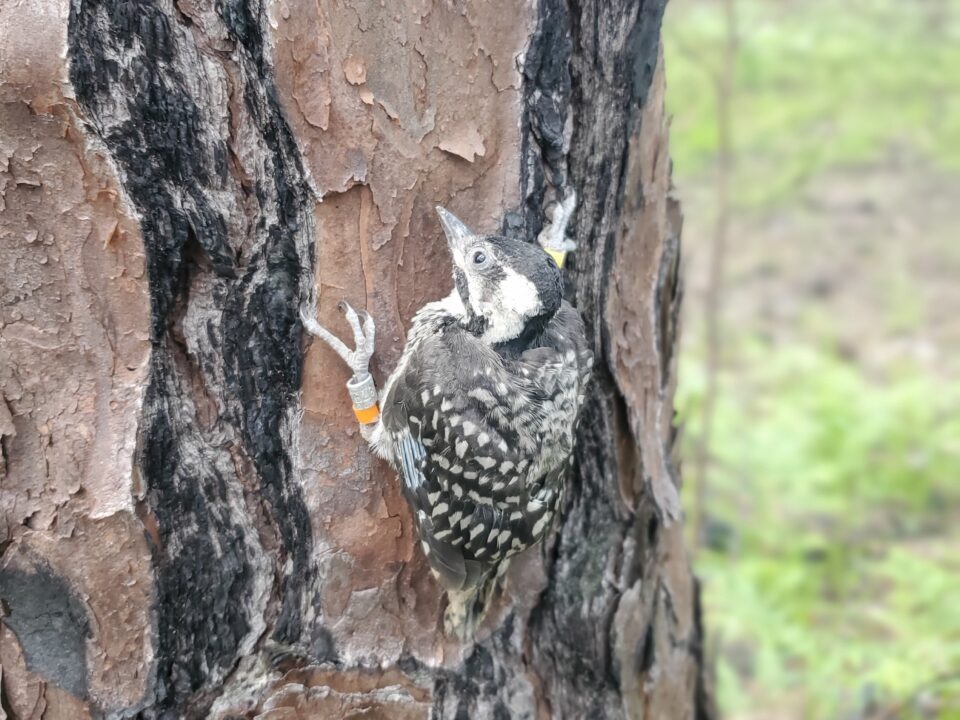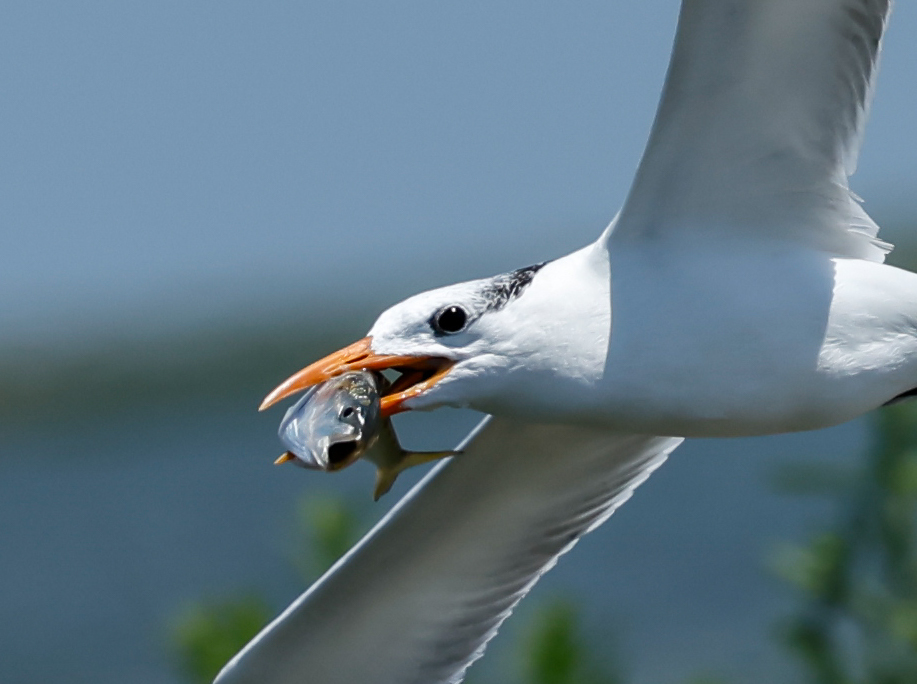Loss of coastal Peregrines continues to spike in Virginia raising concerns about the impact of avian flu

Osprey population along the seaside of the Delmarva Peninsula has collapsed
June 16, 2025
Two Seasons with Waynes Warblers in the Swamp
July 2, 2025Adult female from Elkins Chimney territory. Both the female and male were lost from this site between 2024 and 2025 nesting seasons and were not replaced. This territory has been occupied since 1995. Five territories were vacated between 2024 and 2025 along the Delmarva Peninsula in VA. Photo by Bryan Watts
By: Bryan Watts
6/24/25
The loss of adult peregrines on the outer coast of Virginia was very high for the second consecutive year, increasing concerns about the impact of avian flu on the recovery of the state population. Identification of banded peregrines during the 2025 breeding season on the Delmarva Peninsula revealed that 13 (72%) of the 18 adults identified during the 2024 breeding season were absent in 2025. This compares to 12 (70%) of 17 adults identified in 2023 that were absent in 2024. The elevated levels (72% and 70%) of adult loss since 2023 are very high compared to the previous seven-year average of 16.2%.

The pool of birds available to backfill adult losses appears to be thinning out. In past years, an opening in a territory would result in immediate and intense fighting between a line of contenders to fill the vacancy. This high availability of new recruits is a sign of a healthy breeding population. Over the past two years this pattern has changed. Three long-held territories were not occupied during the 2024 breeding season. By 2025, five additional territories had become vacant. This included the Cobb Island tower that had been occupied almost continuously since 1982 and the Elkins Chimney territory that had been occupied since 1995. These two territories are some of the most desirable breeding areas within the area. The fact that the sites were vacant suggests that the recruitment pool may be near depletion.
The spike in loss of adult peregrines has been confined to the outer coast along the Delmarva. Breeding territories within inland areas have not experienced the same uptick in adult loss. Only 2 (11%) of 18 adults identified in 2023 were not present in 2024 and 0 of 18 adults identified in 2024 were not present in 2025. These values are comparable to the previous seven-year average of 11%.
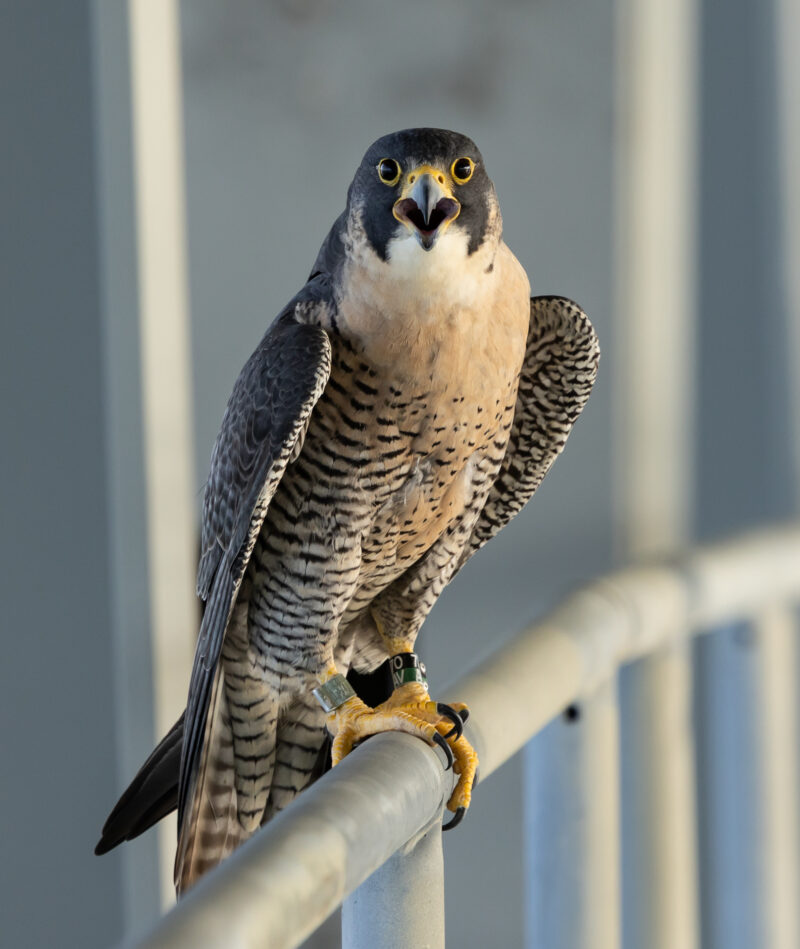
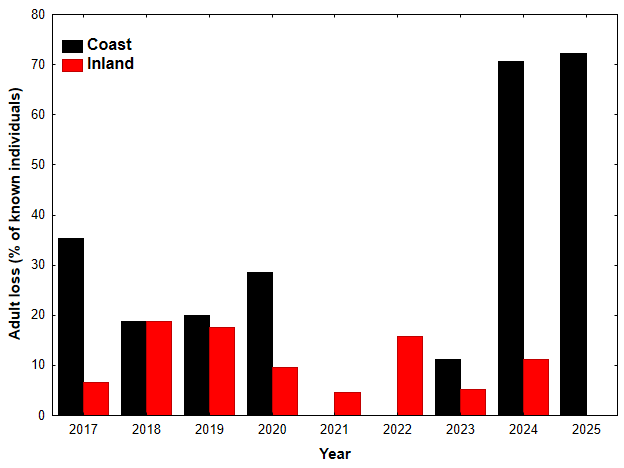
Coastal and inland peregrines have distinctly different diets. Inland pairs feed primarily on passerines while coastal peregrines depend on migratory shorebirds. The Delmarva Peninsula is an internationally important spring staging area for several migrant shorebirds. Nesting by peregrines has been shaped to take advantage of shorebirds during spring passage. However, the incidence of avian flu in migratory shorebirds has been high over the past few years according to samples that have been tested. Given their dependency on shorebirds, exposure to the flu is high for coastal peregrines. What has been a boon to coastal peregrines over the years has become an emerging threat. We will have to stay vigilant and hope that the birds develop an immunity to this form of avian flu.
One bright spot for the season is that a camera placed on one of the vacant nest boxes captured a third-year female and a second-year male inspecting the box multiple times during the season. Virginia peregrines typically nest for the first time at three or four years of age, so these birds were generally too young to form a pair at this time. Although the potential pair was not present at the same time, there is hope that they may colonize this or another site in the near future.
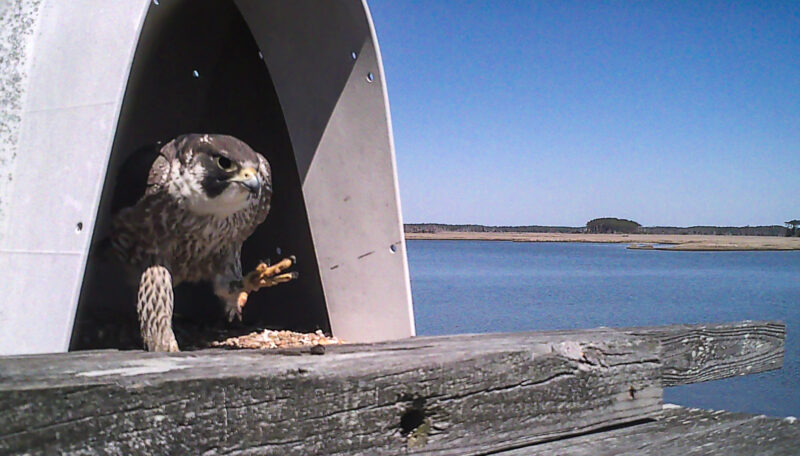
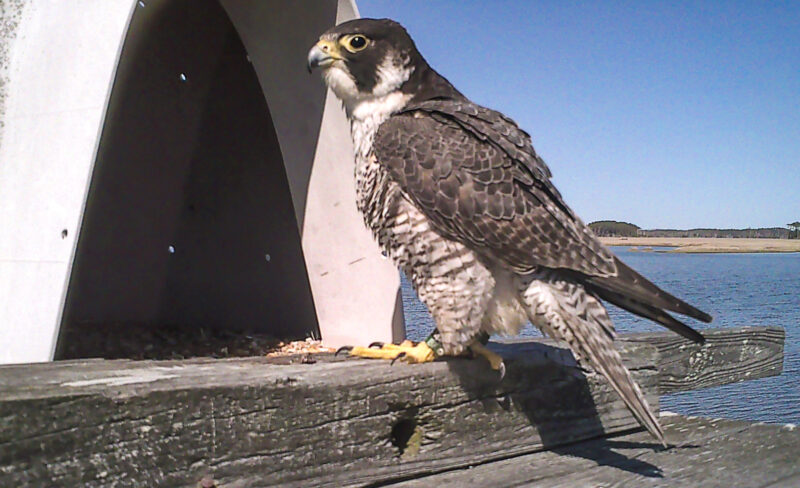
Avian Flu
The vast majority of avian flu variants and outbreaks are referred to as low-pathogenicity avian influenza (LPAI) and result in very low rates of observable disease and low rates of mortality. However, a small number of variants are classified as high-pathogenicity avian influenza (HPAI). Such variants may cause catastrophic impacts to domestic birds and may spill over into populations of wild birds. The current strain of HPAI emerged in poultry in Guangdong, China in 1996 and has undergone significant mutations over the past 20 years circulating within Eurasia and Africa. The movement of H5N1 2.3.4.4 across the Atlantic by migratory birds in late 2021 was a turning point that led to rapid expansion and an unprecedented impact on wild birds. Over the past three years the disease has spread globally and has been documented in more than 500 wild bird species. All indications are that this form or close variants will be circulating for years to come.
Virginia Peregrine Falcon Population
The peregrine falcon was believed to be extirpated as a breeding species in Virginia by the early 1960s. An aggressive restoration program was initiated in 1978 that included the release of 115 captive-reared birds on the Coastal Plain (1978-1985) and 127 birds in the mountains (1985-1993). This program resulted in the first breeding of the modern era in 1982. Since this time, the population has continued a slow but steady recovery reaching 35 known breeding pairs by 2023. Recovery of the population to this milestone has been a long commitment and a lot of resources by a community of concerned biologists and agencies. Avian flu poses a unique threat to recovery efforts. Our hope is that the population will withstand the period of exposure.

